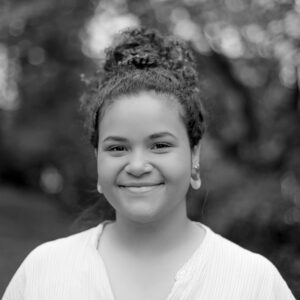Scenes From a NYC School Serving 267 Migrant Children
In Queens, a K-8 charter school reveals the challenges and joys some 21,000 newcomer students are experiencing in the city.
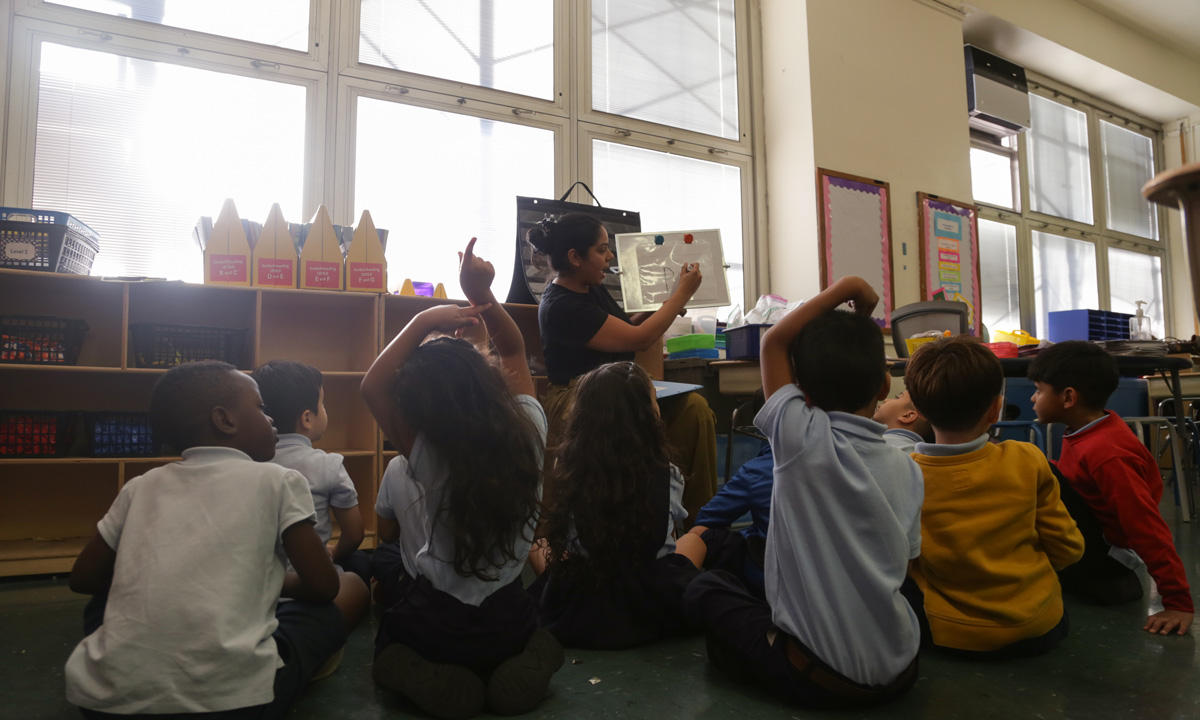
Get stories like this delivered straight to your inbox. Sign up for The 74 Newsletter
Each morning within a three-block radius of Queens, hundreds of newly arrived migrant families prepare their children for school in hotel rooms without kitchens.
Thousands of miles from home, the group of new New Yorkers walks a few hundred steps.
Attached to a trilingual church and food bank, the campus of VOICE, a K-8 charter school, has become a refuge for newcomer families seeking asylum and new lives from mostly Spanish-speaking countries including Colombia, Venezuela, Ecuador and Peru, as well as Pakistan and Egypt, among others.
“Many of them are living in temporary housing and struggling to find work. The families are under a lot of pressure … It’s just a huge amount of change,” said VOICE social worker Kim Moglia.
Through the Long Island City school’s proximity to temporary housing and a growing reputation among families, the school is serving 267 migrant students this year, the most of any charter school in New York state, according to federal Title III funding.
Today, the population comprises nearly a third of VOICE’s student body, and staff are urgently finding ways to support the students and their families living in eight neighborhood shelters and others in Manhattan and parts of Queens.
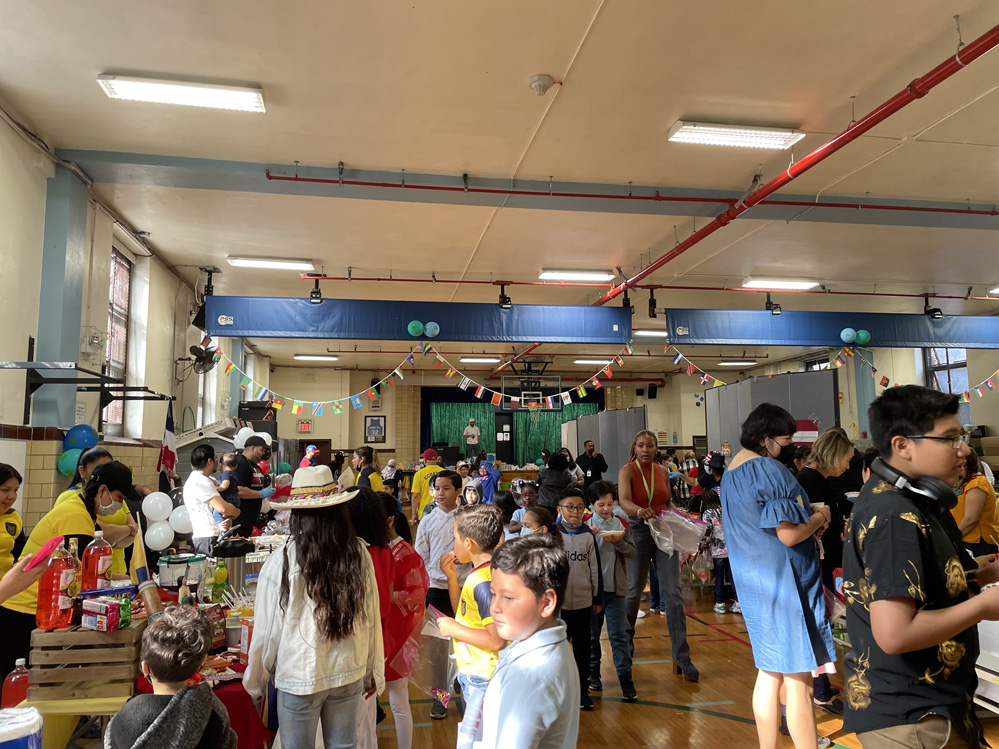
But legal experts and child advocates warn a new city policy displacing families from shelters after 60 days will jeopardize the types of connections being built at schools like VOICE, the most stable place in their lives right now.
“The idea that in the middle of the school year, they would be transitioning housing and then having to start all over again — it worries us,” principal Franklin Headley said.
“They would have to make new friends, new relationships with the teachers … We have the momentum, even in these first two months, to continue with the children that have come to us,” he added.
Throughout New York City, an estimated 21,000 migrant students have joined the public school system since last summer, according to the Department of Education. In the latest waves, nearly all children have been younger, in K-3 grades or not yet school aged, educators and social service staffers told The 74.
While there is room — DOE school enrollment declined by more than 120,000 students in the last five years — the newcomers are experiencing some of the highest levels of need.
Even with the housing concern mounting, VOICE staff has continued to look for ways to work with the new students. To learn from schools serving similar populations, staff traveled cross-country to San Diego over the summer, and are now finishing installation of large washer-dryers for families to use to encourage attendance and remove the financial burden.
School-wide, required music classes help with language acquisition. Newcomers who are struggling are paired with a buddy who speaks their native language. In hallways, it’s not uncommon to hear whispered Urdu and Portuguese. Teachers regularly use keywords, explanations and translated materials in Spanish.
Staff have also taken to small innovations — altering seating charts so newcomers build friendships and teachers can spot if anyone is struggling; bringing in a local immigrant-run soccer organization led by retired players; using the app Language Line to translate messages to families about progress; hiring an art therapist full time.
At VOICE, some students are getting their first introduction to the classroom.
“You hear with your eyes”

Noticing that many are starting without prior schooling or written literacy in their native languages, ELL teacher Jasmine Calderon leads small groups to build on foundations.
Here, a group of 10 first graders practice saying and writing the letter “p,” as they work through the alphabet to begin phonics, how letters interact with each other to make sound.
Because many newcomers aren’t yet used to school life, she gently reminds them to tune in, singing their names and instructing them to pat their heads as they watch and listen for the sound of “puh” in her sentences.
“We’re moving our bodies in a certain way, there’s visuals there for you … You’re going to start to connect what you hear with what you see,” Calderon said, explaining how she helps students see the importance of watching her closely, especially if they don’t understand the words.
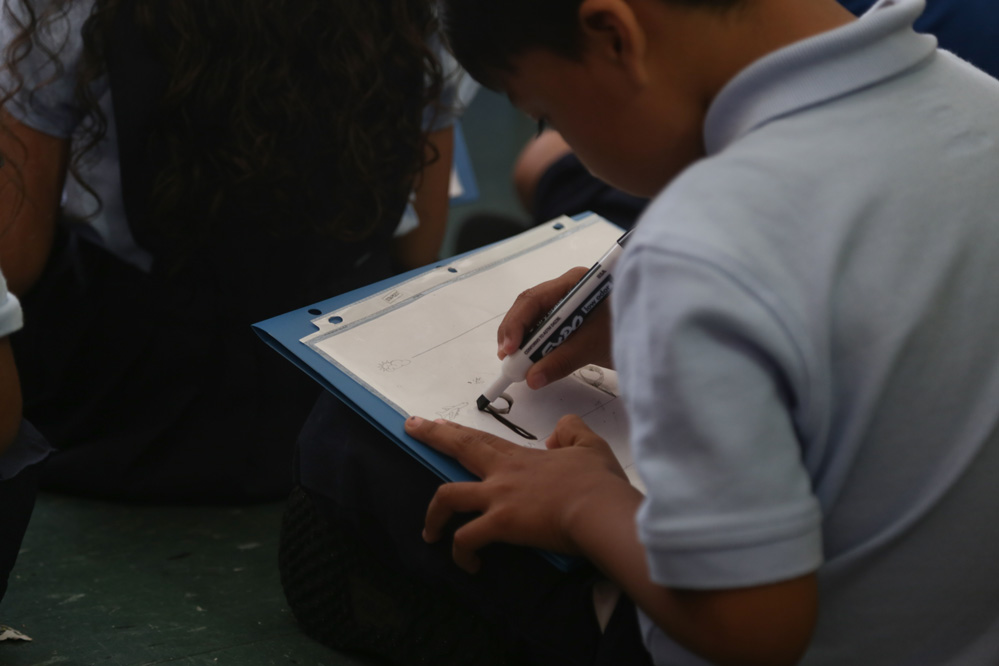
“I tell them all the time, ‘you hear with your eyes.’”
Building blocks for new language
Across the hall, in a second-grade classroom, a row of books greets students as they walk in, including Dear Primo: A Letter to My Cousin, about two boys growing up in the U.S. and Mexico.
Settling into desks for a career planning activity, students dream of being rock stars and astronauts. When language feels out of reach, they draw.
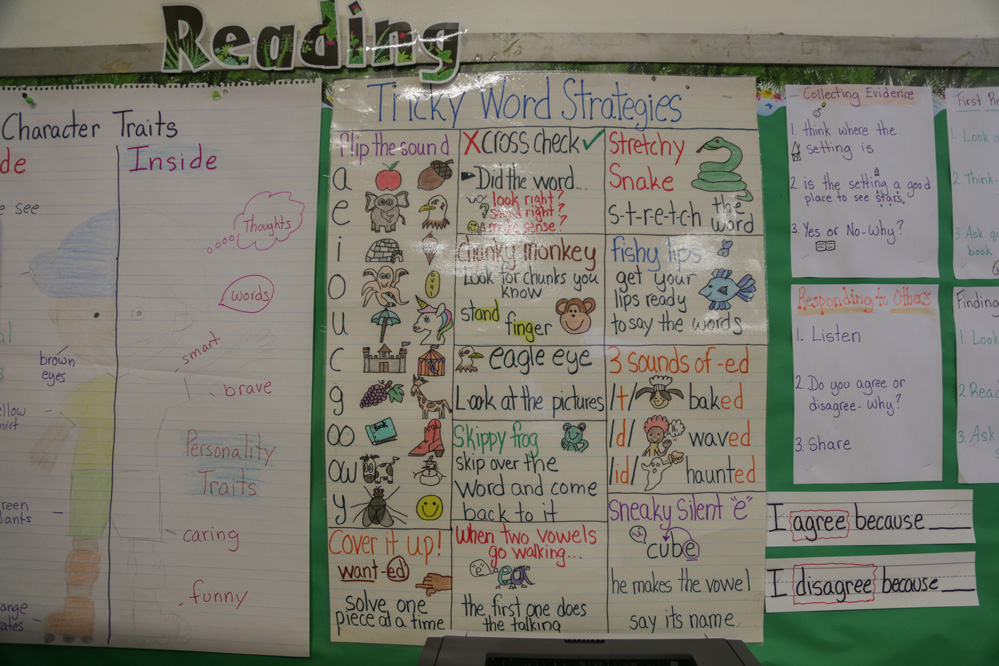
Posters and tools to support reading and writing acquisition deck the walls: sentence starters, strategies that can help make sense of vowel sounds.
In third grade, students break down plots into beginning, middle and end in graphic organizers, a tool teachers have utilized more frequently to help build fluency.
“Even if they’re not at the point where they’re reading the words,” Calderon said, “at least they’re engaged in some type of work. We found that having them draw something was more engaging than just giving them the book and taking observational notes.”
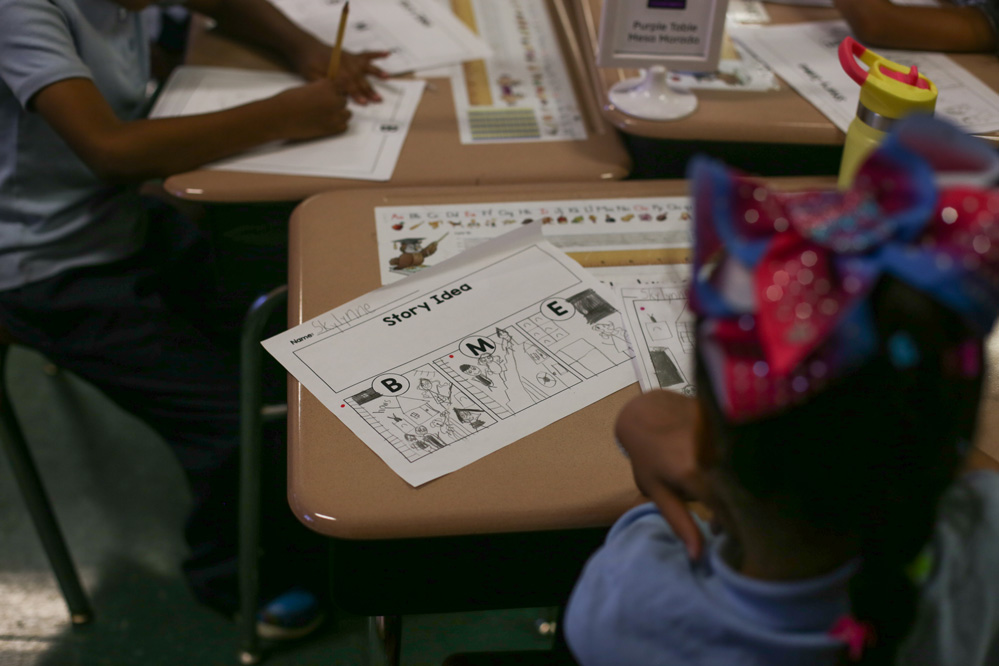
The power of music
The new population has pushed VOICE, founded in 2008, to emphasize music, singing and social-emotional learning, to find a renewed purpose in its mission.
In required music classes, which research confirms supports language acquisition, students shed the nerves that can accompany things like reading aloud.
“You don’t have to be thinking about producing language, you’re just singing along, and then work on pronunciation and things like that there. You’re not taking the same kind of risk as constructing a sentence,” Headley said.
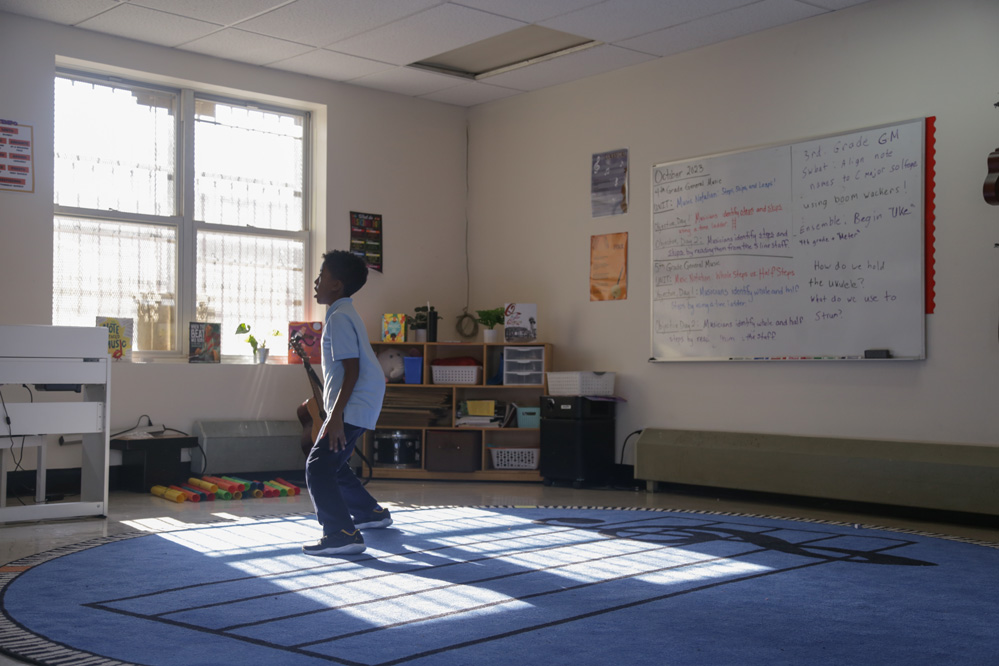
In a room brimming with guitars and laughter, students sing a good morning song featuring at least six languages. Alongside a refrain from their teacher’s guitar, they collectively sing out a common greeting:
“Valentina, Valentina, Valentina, how are you?”
In a rhyming solo, Valentina responds: “I’m tired, I’m happy, and I hope that you are, too.”
Soccer: A language of its own
From choir to soccer practice, the school’s newcomer students are building social connections that transcend language barriers and help their ability to show up in the classroom.
For Jah, a seventh grader who speaks seven languages originally from Burkina Faso in West Africa, playing soccer brings him back to some of his favorite memories. VOICE helped him with the largest barrier: buying turf shoes.
Migrant student athletes perform better in-season than out, according to Matt Coleman, middle school and athletic director. Eighth-grade leaders help translate plays for their teammates. The 15-minute walk back from the park is never silent.
“They’re talking and that’s what I’m trying to get them to do, just communicate with each other,” he said. “If it’s in Spanish or English, it doesn’t really matter.”
To support alum that go on to play soccer in high school, athletic staff juggle calendars to make good on a promise to attend one of each of their games.
The soccer program, open to students of any gender, and its connection to local parks and people is one way students find “opportunity within the community, which can get overlooked,” in brainstorming ways to support migrant students, said soccer coach Dominic Van Bussell.
Keeping culture in the room
To Genesis Bolanos, who teaches at least 10 newcomers across two periods of seventh-grade math, using students’ home languages in the classroom is what makes all the difference, especially for kids who are sometimes only weeks into living in a new country.
In her classes, students work with translated materials provided by the school, allowing them to focus on math without being penalized for their budding English literacy.
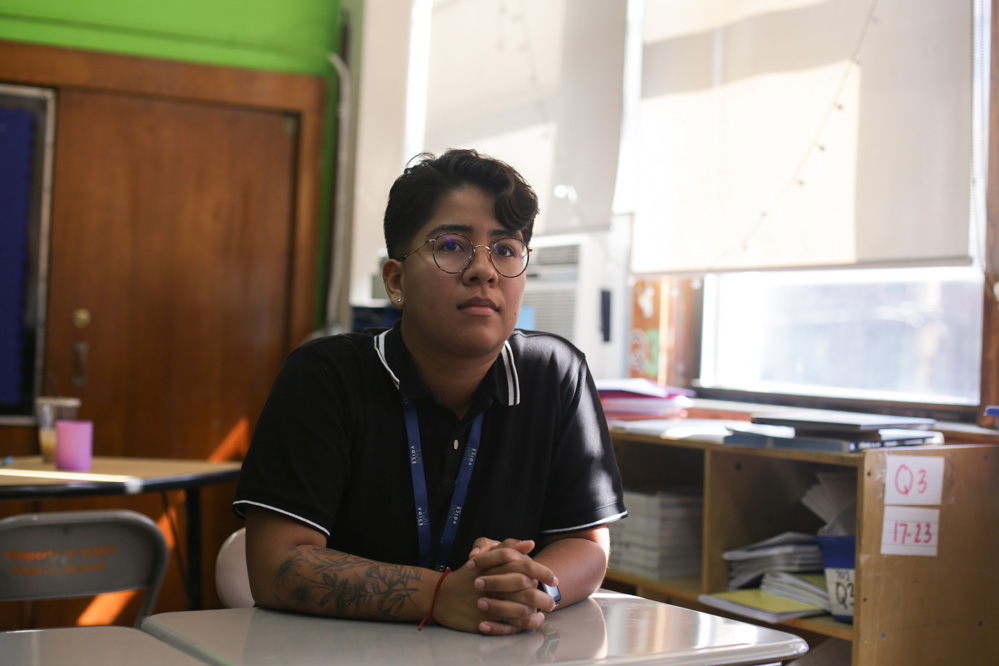
Bolanos said the approach is too-often resisted. Her last Queens charter school wouldn’t allow students and staff to speak Spanish, which contributes to a “loss of shared culture.”
Because VOICE encouraged teachers to try out ideas to support the newcomer population, like hosting a Hall of Nations to get to know foods and traditions from students’ home countries, Bolanos switched up the seating arrangements to lessen isolation.
“In seating them together, they build their own friendships and have their own communities apart from adults, which is obviously what we want,” said Bolanos, a first-generation Ecuadorian-American.
Some newcomers, just a few weeks in, have started to ask to follow along with English materials, keeping their Spanish sheets as a reference point as they learn integers and foundational arithmetic.
“This is just what newcomers deserve,” Bolanos said.
“Something we couldn’t predict”
Some newly enrolled VOICE charter families, after beginning a relationship with the school over the summer, were moved without warning cross-city to shelters in Jamaica, Queens just days before classes started, forced to find other schools.
“That’s something we couldn’t predict, that the city made a decision to start moving people,” principal Headley said. “… I didn’t understand why families would [be ordered to] leave this housing, which is close to the subway and close to facilities.”
The practice of moving families with little notice has continued into the school year, according to The City.
Mayor Eric Adams’s administration has limited migrant family stays in Manhattan hotel shelters run by Humanitarian Resource and Relief centers, home to about 15,000 students, to 60 days. The majority of families, staying in shelters run by the city’s Department of Homelessness Services, may soon be next to receive eviction notices.
City officials did not return requests for comment.
Experts say the forced moves will harm children, threatening to uproot them from their one place of stability.
That stability was so important to one VOICE family with four children, that they commuted to the school two hours each way after being moved to a Coney Island shelter, the southernmost tip of Brooklyn.
“Those kids, including a kindergartner, wouldn’t give up,” Headley said tearfully. He and other staff ultimately traveled to Coney Island to help the family find a nearby school.
The city’s 60-day policy stance, he added, will require schools to take on that kind of “placement work” after moves.
“If that’s what it takes, that’s the reality,” Headley said. “… We have to make sure that they’re OK — that they’re going to be some place where they feel comfortable and safe.”
All photos by Marianna McMurdock
Get stories like these delivered straight to your inbox. Sign up for The 74 Newsletter

;)
